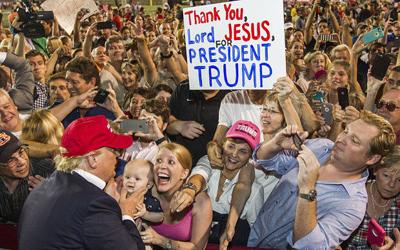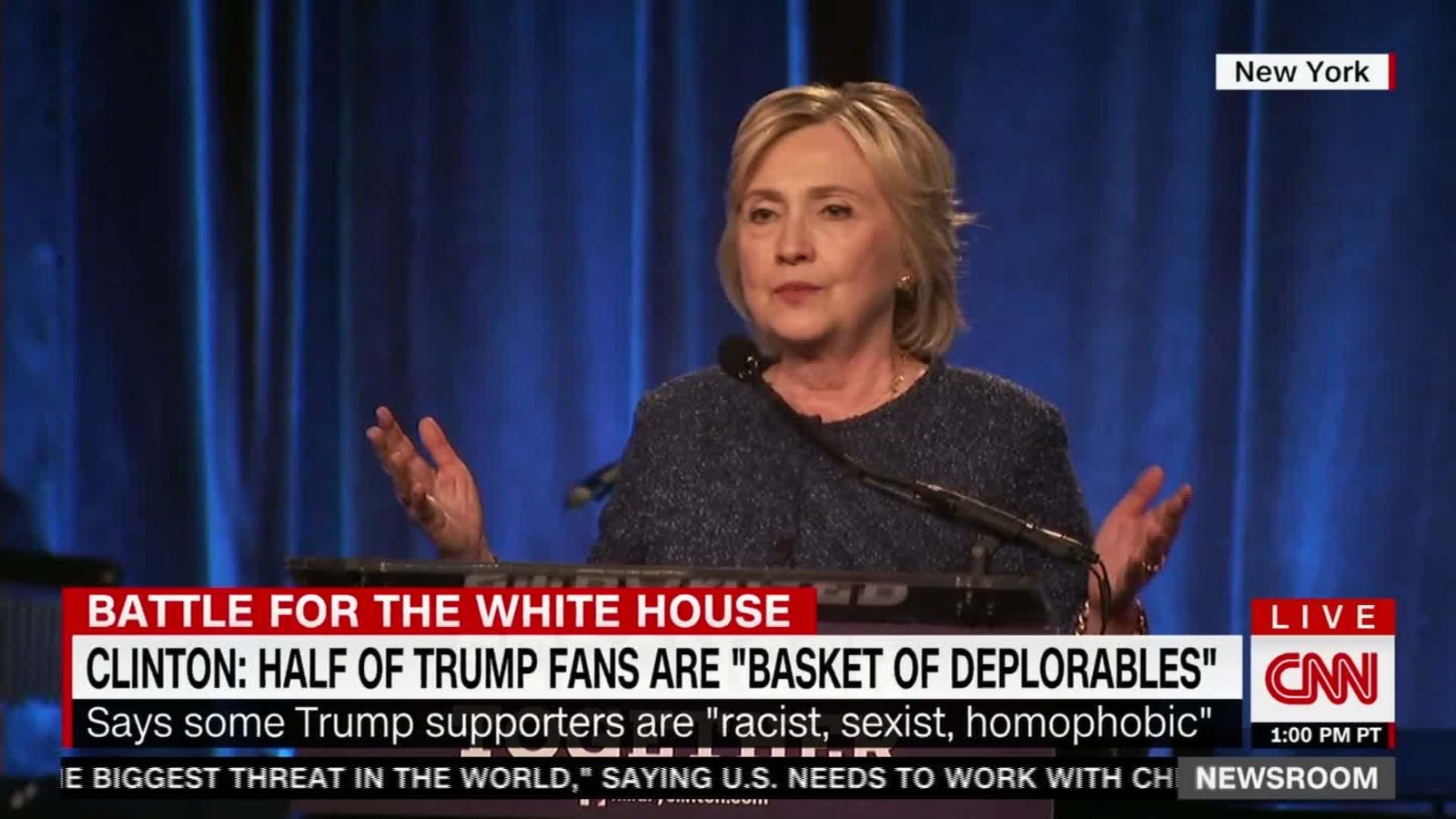One of the biggest issues with the persistence of the idea of ‘Trump Country’ is that all Appalachians get grouped into one category of white, working class male voters. This section looks into reports on the actual voters and their campaign stance preferences, as well as the short falls of the media that create and distribute the press — and overall public image — on Appalachians. Through this we can see that the liberal elite-dominated media uses its reporting prowess to undermine the true makeup of Appalachian voters, and that the region is in fact a population of independent thinkers with varying social and political agendas. Overall, this section tries to disprove the crazed, cult-like image of Trump voters in Appalachia.

Example of how the media portrays Appalachian Trump supporters as crazed fans instead of intelligent voters.
“Media don’t want to understand Trump voters, all 63 million of them“ – John Kass, Chicago Tribune article
This article from the Chicago Tribune in August 2018 backs the notion that Trump was so successful in Appalachia and in the greater country over Clinton not exclusively because of his platform, but because those voters preferred him over the alternative. Examine this quote from author John Kass: “Many were shocked by Trump’s manner, by his bragging, his rude behavior, reference to his hand size, his boorishness, the way he treated women… And still they voted for him. Why? Because they loathed the other side more. They loathed the establishment. They loathed the media. And their reservations about Trump were washed away by the laughter following Clinton’s “deplorables” line.” Not all Appalachians and Trump voters are some type of cult following, idolizing Donal Trump; but many do resent the condescending liberal elites who bash them in the media and in campaigns. Additionally, the article acknowledges that not all Trump voters were white, working class men, but a combination of voters who felt jilted by some greater political and social effects.

More so than just explaining some of the drive behind Appalachians and others to vote for Trump, Kass gives us grounds to understand how the widespread ‘Trump Country’ generalization developed. As the media is typically left-leaning along with the other academic elite, they cast glowing reports of Obama, but glaringly negative ones of Trump, and subsequently, his supporters. Not bothering to empathize or understand the viewpoint of Trump voters, the media ‘othered’ them from the rest of the country, painting a patronizing image of them that creates further resentment.
“Like liberal arts faculties at American colleges, much of American media begins on the left and proceeds ever leftward… Early in the Trump administration, independent studies showed the coverage of the president was overwhelmingly negative. It was as negative as coverage of former President Barack Obama was fawning. Journalism still hasn’t reckoned with its obsequious coverage of Obama. Journalism has ignored it.”
“Why the poorest county in West Virginia has faith in Trump” – Video from The Guardian
The above video from The Guardian, titled “Why the poorest county in West Virginia has faith in Trump” is an example of ways in which the media choses to represent Appalachians as poor, hopeless white individuals with a desperate desire to be saved by the promises of Donal Trump. The video caption states, “Donald Trump was more popular in McDowell County than anywhere else in America during the Republican primaries. Paul Lewis and Tom Silverstone explore the power of the Republican presidential nominee’s message in the poorest county of West Virginia.” Elizabeth Catte references this video in her post “The votes are in – an update to ‘Appalachia as Trump Country'” on her blog [elizabethcatte.com] to reference how the prestigious media ‘other’ Appalachians to get traction on their pieces regarding the working class Trump voters. The remainder of her article delves into while the press focused the most attention on McDowell County to conjure up pro-Trump media, only 26.35% of residents voted for Trump (Catte). This example supports the notion that the media misrepresents Appalachia through overly emphasizing their Trump support, in order to create a more attention grabbing, ‘othering’ appearance in the media.

Figure from the link below shows different priorities for Trump voters, divided into their 5 unique voter identities [see link].
“The Five Types of Trump Voters”
A recent research study was performed by Emily Ekins on the Democracy Fund Voter Study Group. The research aimed to uncover the truth about the hypothesized homogenous block of Trump voters who upset all of the election predictions. Using regression analysis, Ekins concluded that there is not one singular identity for all Trump voters, but instead they can be broken up into 5 main voter types [Free Marketeers, American Preservationists, Anti-Elites, Staunch Conservatives, and the Disengaged].
While the specifics of the study are worth a look, the overarching idea that there is no single type of Trump voter is the most relevant to this discussion. She quotes, “Trump voters hold very different views on a wide variety of issues including immigration, race, American identity, moral traditionalism, trade, and economics.” This idea further shakes the concept of a ‘Trump Country’ that the media casts as a singular bigoted, racist, working class white unit who feel their social status is being threatened. Instead, it shows a dynamism of voter thinking and motivation, opposed to a cult-like political following. Not all Trump voters are working class, and not all are motivated by stopping immigration.

Here are some of the ‘key findings’ from the research report.
